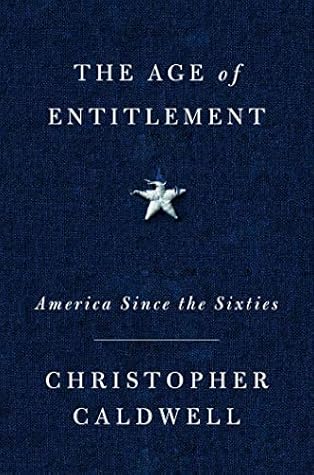More on this book
Community
Kindle Notes & Highlights
Read between
February 15 - February 19, 2020
Where a shared heritage is absent or unrecognized, as it is in the contemporary United States, all the eggs of national cohesion are placed in the basket of the constitution. Hence a paradox: With the dawn of the civil rights era, the U.S. Constitution—the very thing that made it possible for an ethnically varied nation to live together—came under stress.
The problem is that rights cannot simply be “added” to a social contract without changing it. To establish new liberties is to extinguish others.
In a free-market democracy, population translates directly into political power, through votes. It translates indirectly into economic power, through market share. And it eventually translates into cultural power, because advertisers (and, less avowedly, artists) aim to titillate and flatter large audiences.
Restaurants are generally the first immigrant businesses to take root, and decades after World War II there were still many states that
In social life, questioning limits means not bowing down to anything. In economics, questioning limits means not paying for anything.
Unlike our parents in the 1960s, we live in a multicultural society, a society in which “the other” doesn’t become “somebody like yourself.” And when “the other” doesn’t become “somebody like yourself,” you constantly need to ask yourself how many of the other there are—whether in your neighborhood or your apartment building. Because nobody wants to be a minority.
Affirmative action and political correctness were the twin pillars of the second constitution. They were what civil rights was. They were not temporary. Affirmative action was deduced judicially from the curtailments on freedom of association that the Civil Rights Act itself had put in place. Political correctness rested on a right to collective dignity extended by sympathetic judges who saw that, without such a right, forcing the races together would more likely occasion humiliation than emancipation.
When politicians used the term “New Economy,” it was easy for voters to assume it was only a jazzed-up way of describing the process, familiar for centuries, by which mechanization was introduced into certain industrial tasks, creating limited short-term sectorial disruptions but offering rewards to those trained in the new technology.
Certain things would no longer be made in America at all. The country would therefore become an economic part rather than an economic whole, rendering nonsensical, at least for a while, all kinds of inherited cultural and political beliefs about sovereignty, national independence, and social cohesion.
But really there was less to global value chains than met the eye. They were not symphonies of specialist craftsmanship conducted by some boardroom maestro of industrial organization. The new operation was usually some company’s old operation, spirited somewhere else with a lot of bad faith and hocus-pocus. The main purpose of these chains was not industrial (seeking out value in the earth’s far corners) but political (getting across the border to someplace, anyplace, where the obligations to workers that American companies had accumulated since the New Deal could be repudiated).
It was never clear how these left-behind workers were supposed to be protected, especially since globalization was accompanied everywhere by a hollowing out of welfare programs and an atrophy of trade unionism. Helping the less well off no longer meant helping them find jobs. It meant helping them borrow money.
Anti-racism, women’s rights, sexual liberation, world hegemony, government through technology—none of these was free. All would have to be paid for, which meant that they would be fought over. Some people, the public rightly began to suspect, would have to surrender what they considered their rights and submit to a political order designed for others’ benefit. A long-running and deceptively natural-seeming period of “both . . . and” was being replaced by the more usual human condition of “either . . . or.” That is the drama that would enter its final stage with the presidential election of
...more
The rich not only had the money to build bigger institutions but also paid for those institutions in more deeply discounted dollars. It was cheaper for them to amass charitable power than it was for the average citizen. “We all pay, in lost tax revenue, for foundations,” wrote the Stanford political scientist Rob Reich, “and, by extension, for giving public expression to the preferences of rich people.”
That was the civil rights project’s great Achilles’ heel. It eventually drove a critical mass of whites to conceive of themselves as a race, whether they wished to or not. The process through which most white Americans came to understand the dynamic of the system was not fast, but it was inexorable. It took fifty years, years that saw a steep decline in their social status and a degradation of their way of life.
The physicist Max Planck once wrote, “A new scientific truth does not triumph by convincing its opponents and making them see the light, but rather because its opponents eventually die, and a new generation grows up that is familiar with it.”


